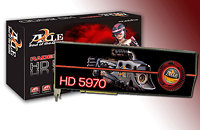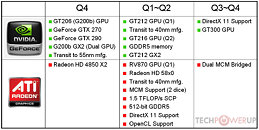
Axle Announces its ATI Radeon HD 5970 Accelerator
Axle is proudly to introduce the unimaginably powerful graphic monster in the world, Axle HD 5970. Featuring with the 2nd generation TeraScale engine, the market is already enchanted by the amazing performance of HD 5870. Now each HD 5970 is empowered by two RV870 GPU, the speed of the card is considered to reach an unparalleled level. Axle HD 5970 is built with 2GB DDR5 memory with 512 bit bandwidth. Armed with 3200 stream processing units, Axle HD 5970 display card delivers well-above four teraFLOPS computing power. Above all, overclockers will be ravished with joy by the massive headroom for overclocking capabilities of each Axle HD 5970.
The new HD 5970 also features with the most innovative technology from ATI - Eyefinity. With this unimaginable technology, gamers can connect Axle HD5800 series with three displays simultaneously at a resolution of 1080p. The "wrap around" experience enable the gamers to be fully absorbed in the animated world. Other than 3D gaming, Eyefinity can be widely adopted to the applications which require to view several windows in the same time.
The new HD 5970 also features with the most innovative technology from ATI - Eyefinity. With this unimaginable technology, gamers can connect Axle HD5800 series with three displays simultaneously at a resolution of 1080p. The "wrap around" experience enable the gamers to be fully absorbed in the animated world. Other than 3D gaming, Eyefinity can be widely adopted to the applications which require to view several windows in the same time.


